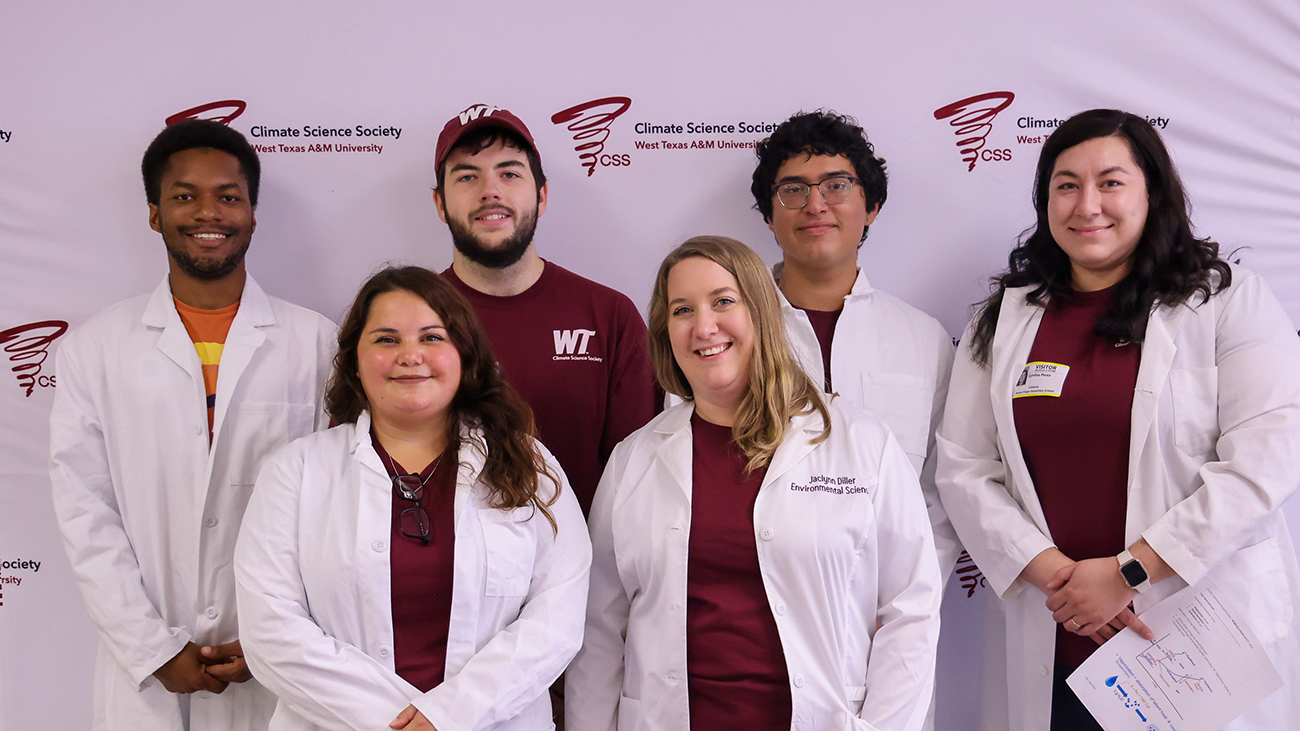- Featured
- Science
- Community
WT Professor, Students Making Science Education Fun for Panhandle-Area Children
Copy by Chip Chandler, 806-651-2124, cchandler@wtamu.edu
CANYON, Texas — A West Texas A&M University professor and his students are making it easier for students around the Panhandle to understand climate science.
Dr. Naruki Hiranuma and students in the WT Climate Science Society have developed an outreach program to teach climate science to various age groups—a program that they hope to loan out to schools around the state and the globe.
“Combining the topics of environmental and climate science is an efficient and interesting tool to connect young students with fundamental science by demonstrating how science provides information so one can interpret, digest and solve everyday life problems,” Hiranuma said.
Since September 2020, Hiranuma and the CSS students have presented the program to more than 750 students at 21 outreach events. Additionally, nine Canyon Independent School District after-school teachers and seven education officers at the Don Harrington Discovery Center and the Amarillo Zoo have trained to conduct the program.

Photo: West Texas A&M University Climate Science Society members include, front from left, Heather Ogle and Jaclynn Diller, and back from left, William Norwood, Jacob Hurst, Jesus Lopez and Cynthia Perez.
“Climate science can seem pretty overwhelming to little learners, but it's something that is really important to incorporate in a developmentally-appropriate way,” Canyon ISD Kids Program Manager Debbie Collier said. “We are so proud to have been a part of Dr. Hiranuma’s pilot and are thrilled to be able to provide this unique curriculum in our afterschool program in an expanded capacity. This is just another way Canyon ISD and its partnerships provide robust learning opportunities for our students.”
The WT team offers three separate modules to teach environmental and climate science to various age groups.
The first shows students how clouds are formed by letting them have a safe, hands-on experience in creating clouds with dry ice and water. The second demonstrates to students the ways that carbon dioxide can impact heat absorption, particularly in the Arctic. And the third explains how those impacts have consequences on Arctic ecosystems.
“The Arctic is warming faster than the rest of the world,” Hiranuma said. “Overall, this phenomenon—called Arctic amplification—has altered the Arctic sea ice coverage, climate and ecosystems over the last few decades. Providing public visibility is important to resolving the knowledge/enthusiasm gap between scientists and the public.”
Ultimately, Hiranuma and his students hope to show grade-schoolers that science education can be fun.
“Helping students overcome their fears in science at their age is crucial not only for them to have their future career development opportunities in the science field but also for fostering the next generation of scientists,” Hiranuma said. “CSS students believe that their activities introduce students to global climate change in an enjoyable and meaningful way.”
CSS will provide STEM outreach activities at Amarillo Zoo’s Boo at the Zoo event Oct. 21 and 22, in addition to continued partnerships with Canyon ISD and other schools.
Hiranuma estimates that these outreach modules potentially will have a direct impact on about 10,000 students grades kindergarten through 12, as well as more than 70 Panhandle-area science teachers. CSS hopes to bring their climate education kits to Japan and other countries in the future.
Addressing regional challenges and making an impact throughout the region and beyond are key components of the University’s long-range plan, WT 125: From the Panhandle to the World .
That plan is fueled by the historic, $125 million One West comprehensive fundraising campaign. To date, the five-year campaign — which publicly launched in September 2021 — has raised more than $110 million.
Photo: West Texas A&M University Climate Science Society member William Norwood, second from left, assists Dr. Naruki Hiranuma, center, in an exercise showing how dry ice makes clouds for students at Reeves-Hinger Elementary School in Canyon.
About West Texas A&M University
WT is located in Canyon, Texas, on a 342-acre residential campus. Established in 1910, the University has been part of The Texas A&M University System since 1990. WT, a Hispanic Serving Institution since 2016, boasts an enrollment of about 10,000 and offers 59 undergraduate degree programs and more than 40 graduate degrees, including two doctoral degrees. The University is also home to the Panhandle-Plains Historical Museum, the largest history museum in the state and the home of one of the Southwest’s finest art collections. The Buffaloes are a member of the NCAA Division II Lone Star Conference and offers 14 men’s and women’s athletics programs.
—WT—

